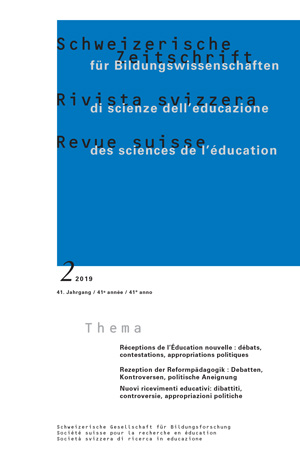Conceptual continuity and biographical discontinuity
Ernst Schneider (1878-1957): reform pedagogue, dismissed teacher trainer, university lecturer, psychoanalyst
DOI:
https://doi.org/10.24452/sjer.41.2.4Keywords:
Progressive Education, Progressive Education in Switzerland, Psychoanalysis, School Reform, Teacher TrainingAbstract
In the 19th century, the position of director of a teacher training instititon in Switzerland was similar to an ejection seat: depending on the political constellation of the government, it was occupied or its holder was removed from office. In the Canton of Berne, this process has been played through, which illustrates that the post of a director of teacher seminar was at the interface between political and pedagogical power. The director of the seminar, who was largely solely responsible for the pedagogical direction of the institution, usually held also a teaching position at the university or an extraordinary professorship: He was therefore also responsible for the university training of future secondary teachers. In the primary teacher training seminar, supported by a lecturer, a methodology teacher and teachers in different school subjects, he shaped all areas: from strategic orientation to school excursions, from examinations to the timetable of future teachers and also teaching. He wrote the first exposés for curriculum revisions and changes in regulations. He was consulted by the government on important educational policy decisions in the canton. He was also in close contact with the respective politically responsible person, the minister of education, whose term of office was generally shorter than his - but not always, as a glance at the history of the Bern State Seminar and the person of Ernst Schneider shows.
Downloads
Downloads
Published
Issue
Section
License

This work is licensed under a Creative Commons Attribution 4.0 International License.



